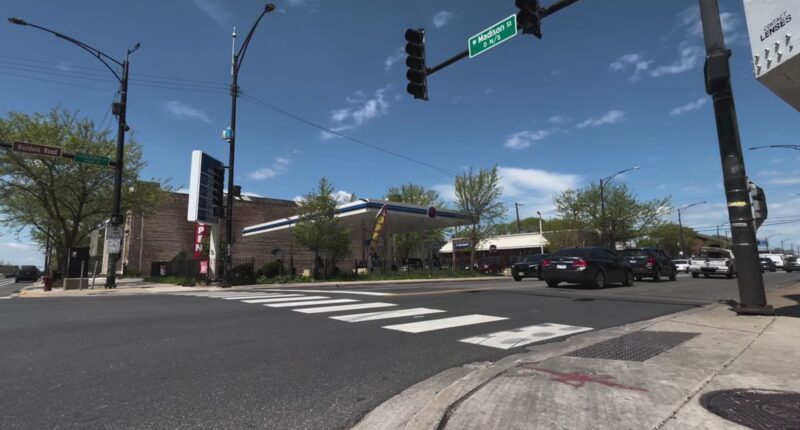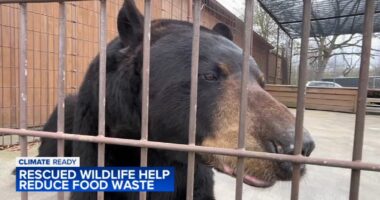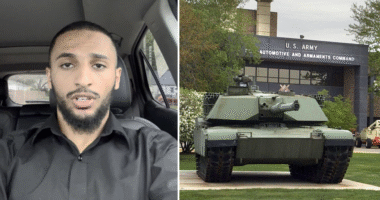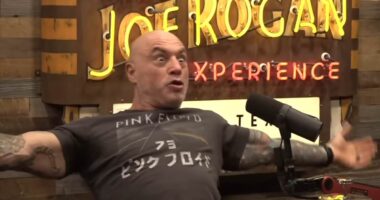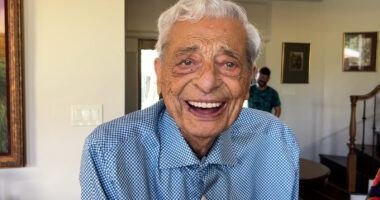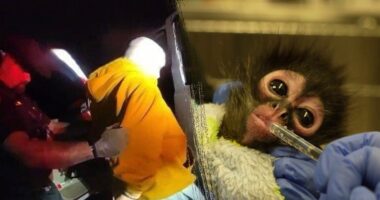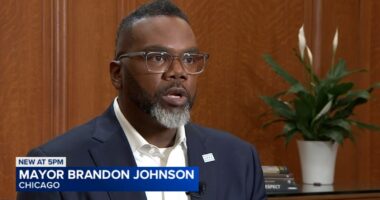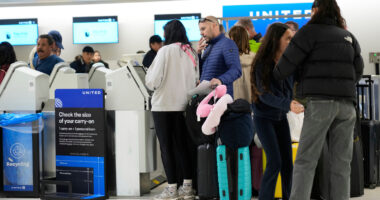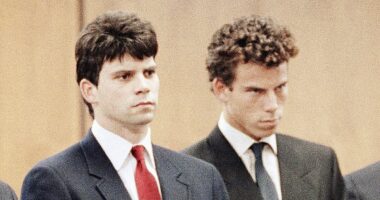CHICAGO (WLS) — Austin, a vast neighborhood on Chicago’s West Side, is home to over 100,000 residents, making it the city’s third-largest community. Despite facing intricate challenges, the area boasts a rich history and a remarkable sense of perseverance.
Benny Lee, a former prominent figure in the Vice Lords street gang, has a deep connection to Austin. Lee has undergone a profound transformation, transitioning into a highly regarded street counselor in the city. He is dedicated to supporting individuals who have been previously incarcerated.
During a recent segment of ABC7’s “Our Chicago – Neighborhood Walk,” journalist Val Warner accompanied Lee on a poignant exploration of the surroundings that played a crucial role in shaping him. This journey provided viewers with a distinct insight into both the individual and the community he serves. Through personal stories and reflections on history, their walk vividly illustrated the past, present, and enduring resilience of the people in Austin.
ABC7 Chicago is now streaming 24/7. Click here to watch
For Warner, the experience was an opportunity to connect with an “Austin legend.”
“I’m in the Austin neighborhood with an Austin legend. His name is Benny Lee. Very good to see you,” she began, setting the stage for a tour guided by a man who has lived the dramatic evolution of the neighborhood.
Lee’s connection to Austin dates back to 1966, when his family moved to the then-predominantly white area.
“We went through a lot of challenges,” Lee told Warner.
Lee’s youth in Austin became enmeshed with the Vice Lords, one of Chicago’s most formidable street gangs. His leadership role eventually led to incarceration, where he even faced the specter of Death Row after being falsely accused of instigating a riot at the Pontiac Correctional Center in July 1978, where three guards were killed. He was later exonerated of those charges.
However, Lee’s release from prison in the mid-1980s marked a pivotal turning point. He emerged not with bitterness, but with a profound sense of purpose: to guide others away from the path he once trod and to help them rebuild their lives after incarceration.
Lee is also a respected professor at Northeastern Illinois University and a sought-after speaker, known for his powerful oratory and his ability to connect with diverse audiences, as highlighted by his involvement with TEDxNAPERVILLE, where he has shared his insights on breaking cycles of trauma and violence. His talks emphasize radical forgiveness, healing, and rebuilding communities from within.
His mission with the formerly incarcerated is now institutionalized at the Sankofa Center, Lee’s Austin office and the starting point of his walk with Warner.
“What we do is train formerly incarcerated men and women how to market themselves as convicted felons,” Lee explained,. “Show them that there is a life after incarceration, that they don’t have to walk around with this double conscious, how they see themselves and how they believe the world sees them.”
From the Sankofa Center, a hub of hope and second chances, Warner and Lee walked to a corner imbued with deep personal significance for Lee: the block where his parents lived, a street now bearing his mother’s name. “Well, because it’s named after my mother, Miss Ruby Lee,” Lee
explained, a touch of pride in his voice. “She at one time was the block president. Now, these young guys around here still today call her grandma.”
Lee said that young people still turn down their radios when they drive on the 5900 block of North Pine where his mother lived. “They turn their music down ’cause they can hear Grandma say ‘Boy turn that music down,'” Lee says. “That just shows you the impact she had.”
The tour then proceeded to Austin High School at 231 N. Pine St., Lee’s alma mater, though his time there was cut short by the racial turmoil that engulfed the city and the nation in the late 1960s.
“I was supposed to go four years in a program called Clerical Office Procedures,” Lee recounted. “So when I graduated, I could work at any office setting. But I didn’t make it out my freshman year because that was the same year MLK was assassinated. And it was racial tension because this was a majority white community. All the blacks got suspended (after violence at the school) and nothing happened to the whites. They said I was the ringleader because at the time I was the chief for the Vice Lords.”
Lee ended up being sent to the Illinois Youth Detention Center in St. Charles, which began a long period of him being in and out of correctional facilities.
This raw account highlights the systemic issues and the volatile environment that shaped Lee’s early life, providing context for the choices he made and the path he ultimately took. His suspension from Austin High wasn’t just an interruption of his education; it was a reflection of the broader societal fractures that often pushed young Black men to the margins.
Lee’s journey from that moment of being labeled a “ringleader” to becoming a revered community leader is a testament to his resilience and capacity for transformation.
He didn’t just turn his own life around; he dedicated it to ensuring others had the support he might not have received. His work is informed by his own experiences, lending an authenticity and credibility that few can match. He has developed curricula for violence prevention and intervention, counseled thousands of individuals, and collaborated with law enforcement and community organizations to foster peace.
After visiting Austin High, Warner and Lee headed to Columbus Park. This beautiful 135-acre park is considered by many to be the finest work of legendary landscape architect Jens Jensen. It is one of the few parks in the country that is a National Historic Landmark.
Lee also recalled racial tensions at that park when his family moved to Austin in the mid-1960s. The area around Columbus Park was then almost all-white. “Blacks back then lived on the east side of Austin,” Lee recalled. “We had to travel to a white community, then fight to get to the neighborhood, fight to swim in the pool and fight to get back.”
The final stop on Warner and Lee’s Austin exploration was a culinary institution: MacArthur’s Restaurant at 5432 W. Madison St. The restaurant has had many legendary visitors, many of whom have their photos displayed on the walls of the eatery: President Barack Obama, Gov Pritizer, former Mayor Richard J. Daley, activist Jesse Jackson, basketball star Dwyane Wade and others.
“MacArthur’s is iconic,” Warner exclaimed, clearly anticipating the experience. “This is my first time. So I’m really, really, really excited and … is that peach cobbler?!! I feel like I need more than two sides,
The lively atmosphere of MacArthur’s, a beloved spot for soul food, provided a warm and fitting end to the walk. As they prepared to eat, Warner expressed her gratitude: “I don’t know about you. I’m tired of talking, so let’s eat some good old soul food. Benny, thank you so much.”
You can view viewing the full Austin installment of “Our Chicago – Neighborhood Walk with Val Warner” in the video at the top of this page.
Copyright © 2025 WLS-TV. All Rights Reserved.
